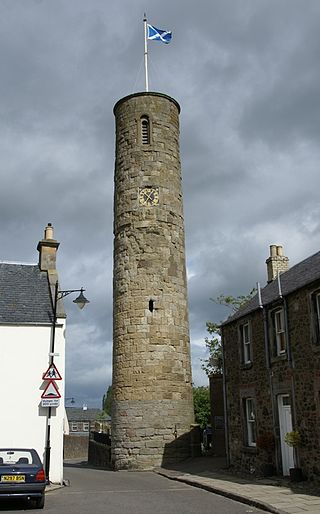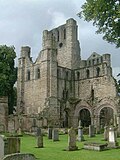Top Qs
Timeline
Chat
Perspective
List of oldest buildings in Scotland
From Wikipedia, the free encyclopedia
Remove ads
This article lists the oldest extant freestanding buildings in Scotland. In order to qualify for the list a structure must:
- be a recognisable building (defined as any human-made structure used or intended for supporting or sheltering any use or continuous occupancy);
- incorporate features of building work from the claimed date to at least 1.5 metres (4.9 ft) in height and/or be a listed building.

This consciously excludes ruins of limited height, roads and statues. Bridges may be included if they otherwise fulfill the above criteria. Dates for many of the oldest structures have been arrived at by radiocarbon dating and should be considered approximate.
The main chronological list includes buildings that date from no later than 1199 AD. Although the oldest building on the list is the Neolithic farmhouse at Knap of Howar, the earliest period is dominated by chambered cairns, numerous examples of which can be found from the 4th millennium BC through to the early Bronze Age.
Estimates of the number of broch sites throughout the country, which date from the Iron Age, range from just over 100 to over 500.[2] However, only a small percentage are sufficiently well preserved for them to be included here and some of those that could be remain undated.
As there are relatively few structures from the latter half of the first millennium AD and a significant number from the 12th century, the latter group is placed in a sub-list. There are larger numbers of extant qualifying structures from 1200 onwards and separate lists for 13th-century castles and religious buildings are provided. As the oldest buildings in many of the council areas in the more urbanised Central Belt date from after the 14th century, a separate list showing oldest buildings by council area is provided.

There is also a supplementary list of qualifying structures for which no confirmed date of construction is available and a short listing of substantial prehistoric structures that are not buildings as defined above.
Remove ads
Main list
Neolithic and Bronze Age
Iron Age
Early Historic period
12th century
Remove ads
13th century
Castles
Religious buildings
Remove ads
By council area
Summarize
Perspective

The following are amongst the oldest buildings in each council area of Scotland.
Remove ads
Other structures
Summarize
Perspective
Undated buildings
The following are very old buildings that meet the qualifying criteria but for which no reliable date of construction has emerged.
Other prehistoric constructions
The following are very old human constructions that do not fit the above criteria for a building.
Remove ads
See also
- Architecture of Scotland in the Prehistoric era
- Timeline of prehistoric Scotland
- Oldest buildings in the United Kingdom
- List of oldest known surviving buildings
- Newgrange, one of Ireland's oldest buildings dating from c. 3100 BC
- La Hougue Bie, one of Jersey's oldest buildings dating from c. 3500 BC
Notes
- The excavator, Euan MacKie, identified two successive visits to the site by a Roman fleet during Governor Agricola's campaigns in the AD 80s. The first resulted in presents for the chief but the second in the burning and destruction of the site. The fort guards the entrance of Loch Harport which may be the Roman harbour Portus Trucculensis mentioned by Tacitus.
- This broch was excavated in 1962-64 by Euan MacKie. It was the first to be radiocarbon-dated, the first to revealed deposits dating from its construction and the first to reveal evidence for deliberate demolition. New C14 dates may shortly be available.
- Brig o' Balgownie was originally constructed in the 14th century by Richard Cementarius but was "largely rebuilt" in the early 17th century.[134] Provost Skene's House in Broad Street dates from 1545 and is probably the oldest house in the city.[135]
- Tullibody Old Bridge, which dates from the early 16th century[137][138] has been described as "the oldest structure in Clackmannanshire" by Clackmannanshire Council.[139]
Remove ads
Footnotes
References
Wikiwand - on
Seamless Wikipedia browsing. On steroids.
Remove ads
























































































































